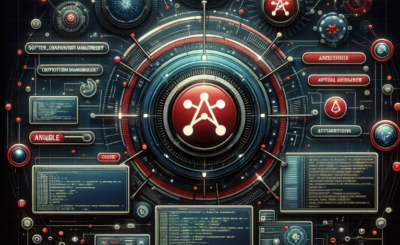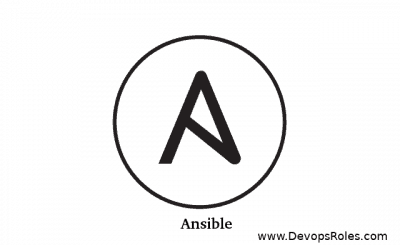The world of IT automation is constantly evolving, demanding faster, more efficient, and more intelligent solutions. Traditional methods of creating Ansible playbooks, while effective, can be time-consuming and prone to errors. This is where the transformative power of Generative AI steps in. IBM is leveraging the potential of Generative AI to significantly enhance the development and management of Ansible playbooks, streamlining the entire automation process and improving developer productivity. This article will explore how IBM is integrating Generative AI into Ansible, addressing the challenges of traditional playbook creation, and ultimately demonstrating the benefits this innovative approach offers to IT professionals.
Table of Contents
- 1 Understanding the Challenges of Traditional Ansible Playbook Development
- 2 Generative AI: A Game Changer for Ansible Automation
- 3 Practical Example: Using Generative AI to Create an Ansible Playbook
- 4 Exploring IBM’s Specific Implementations (Hypothetical Example – No Publicly Available Specifics)
- 5 Frequently Asked Questions
- 5.1 Q1: Is Generative AI for Ansible Playbooks ready for production use?
- 5.2 Q2: What are the security implications of using Generative AI for Ansible Playbooks?
- 5.3 Q3: How does the cost of using Generative AI for Ansible compare to traditional methods?
- 5.4 Q4: Will Generative AI completely replace human Ansible developers?
- 6 Conclusion
Understanding the Challenges of Traditional Ansible Playbook Development
Creating Ansible playbooks traditionally involves a deep understanding of YAML syntax, Ansible modules, and the intricacies of infrastructure management. This often leads to several challenges:
- Steep Learning Curve: Mastering Ansible requires significant time and effort, creating a barrier to entry for many.
- Time-Consuming Process: Writing, testing, and debugging playbooks can be incredibly time-intensive, especially for complex automation tasks.
- Error-Prone: Even experienced Ansible users can make mistakes in YAML syntax or module configuration, leading to deployment failures.
- Lack of Reusability: Playbooks often lack standardization, making it difficult to reuse code across different projects.
Generative AI: A Game Changer for Ansible Automation
IBM’s integration of Generative AI into the Ansible workflow aims to address these challenges directly. By utilizing the power of AI, developers can significantly accelerate playbook creation, improve code quality, and reduce errors. This involves several key aspects:
AI-Powered Code Generation
Generative AI models can analyze existing Ansible playbooks and generate new code based on natural language descriptions or code snippets. This allows developers to simply describe their desired automation tasks in plain English, and the AI will generate the corresponding Ansible code. For example, a simple prompt like “Create an Ansible playbook to install Apache web server on a CentOS machine” could produce a fully functional playbook.
Intelligent Code Completion and Suggestions
Generative AI can also provide real-time code completion and suggestions as developers write their playbooks. This feature helps to prevent syntax errors, suggests best practices, and improves code readability.
Automated Playbook Testing and Debugging
Integrating Generative AI into the testing and debugging process can drastically reduce the time spent identifying and fixing errors. The AI can analyze the playbook code and identify potential issues before deployment, significantly improving the reliability of automated tasks.
Improved Code Reusability
Generative AI can analyze existing playbooks and identify common patterns and reusable components. This allows developers to create modular playbooks that can be easily reused across different projects, promoting consistency and reducing development time.
Practical Example: Using Generative AI to Create an Ansible Playbook
Let’s consider a scenario where we need to create an Ansible playbook to configure a web server. Instead of manually writing the YAML code, we can use a Generative AI tool. We provide a natural language description:
“Create an Ansible playbook to install and configure Apache web server on Ubuntu 20.04. The playbook should also create a virtual host for example.com.”
A Generative AI model would then generate the following (simplified) Ansible playbook:
---
- hosts: all
become: true
tasks:
- name: Update apt cache
apt:
update_cache: yes
- name: Install Apache2 web server
apt:
name: apache2
state: present
- name: Enable Apache2 service
systemd:
name: apache2
state: started
enabled: yes
- name: Create virtual host for example.com
template:
src: /path/to/example.com.j2
dest: /etc/apache2/sites-available/example.com
notify: restart apache2
- name: Enable virtual host for example.com
command: a2ensite example.com
notify: restart apache2
handlers:
- name: restart apache2
service:
name: apache2
state: restartedNote: This is a simplified example. A real-world scenario would require more complex configurations and error handling.
Exploring IBM’s Specific Implementations (Hypothetical Example – No Publicly Available Specifics)
While IBM hasn’t publicly released detailed specifications of its Generative AI integration with Ansible, we can hypothesize potential implementations based on current AI trends:
- IBM Watson integration: IBM’s Watson AI platform could power the underlying Generative AI models for Ansible playbook creation.
- Plugin for Ansible Tower: A plugin could be developed to seamlessly integrate the Generative AI capabilities into the Ansible Tower interface.
- API access: Developers might be able to access the Generative AI functionalities through an API, allowing for custom integrations.
Frequently Asked Questions
Q1: Is Generative AI for Ansible Playbooks ready for production use?
While the technology is rapidly advancing, the production readiness depends on the specific implementation and the complexity of your automation needs. Thorough testing and validation are crucial before deploying AI-generated playbooks to production environments.
Q2: What are the security implications of using Generative AI for Ansible Playbooks?
Security is a paramount concern. Ensuring the security of the Generative AI models and the generated playbooks is essential. This involves careful input validation, output sanitization, and regular security audits.
Q3: How does the cost of using Generative AI for Ansible compare to traditional methods?
The cost depends on the specific Generative AI platform and usage. While there might be initial setup costs, the potential for increased efficiency and reduced development time could lead to significant long-term cost savings.
Q4: Will Generative AI completely replace human Ansible developers?
No. Generative AI will augment the capabilities of human developers, not replace them. It will automate repetitive tasks, freeing up developers to focus on more complex and strategic aspects of automation.

Conclusion
IBM’s exploration of Generative AI for Ansible playbooks represents a significant step forward in IT automation. By leveraging the power of AI, developers can overcome many of the challenges associated with traditional Ansible development, leading to faster, more efficient, and more reliable automation solutions. While the technology is still evolving, the potential benefits are clear, and embracing Generative AI is a strategic move for organizations seeking to optimize their IT infrastructure and operations. Remember to always thoroughly test and validate any AI-generated code before deploying it to production. Thank you for reading the DevopsRoles page!

